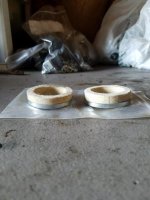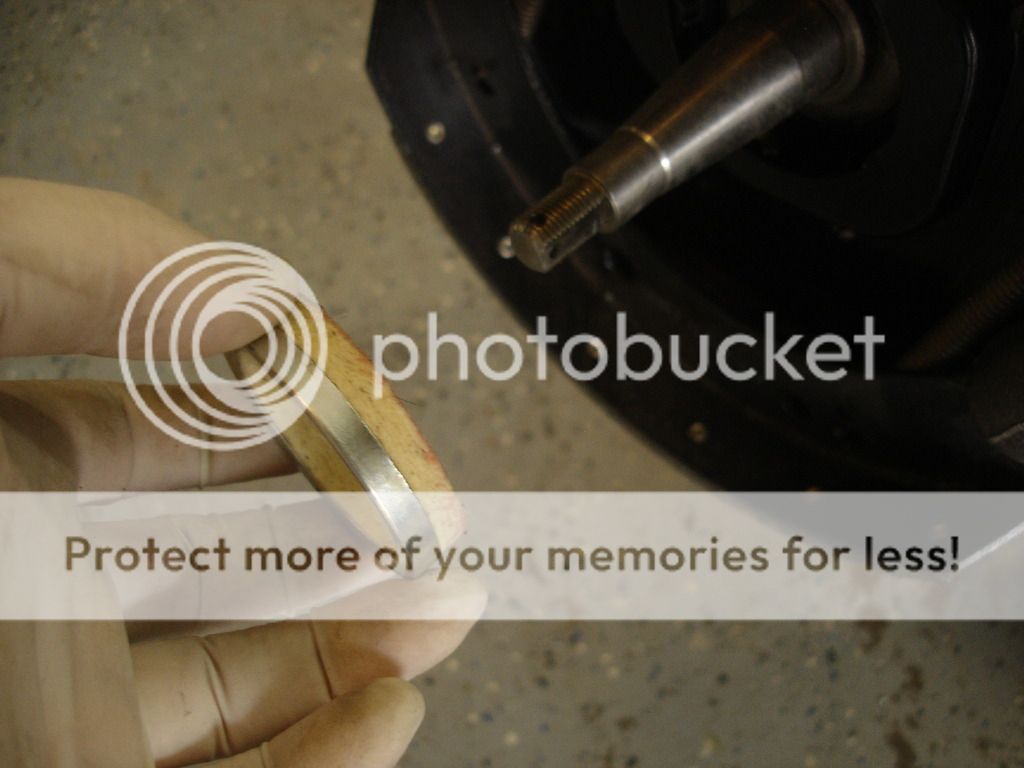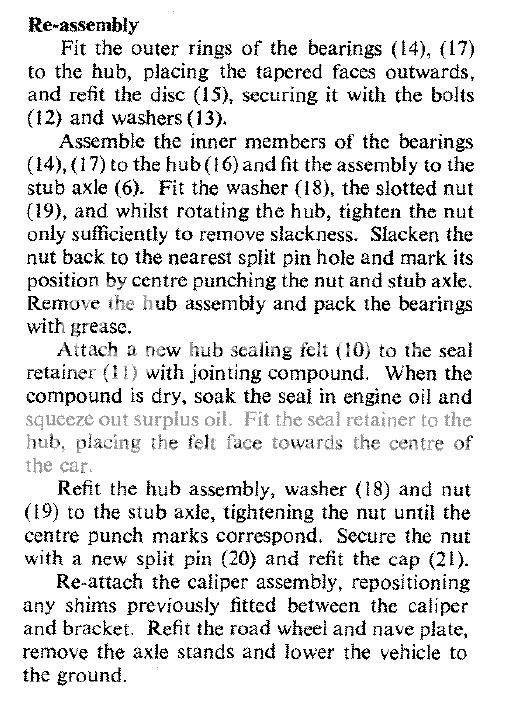Keep in mind I need to put the rear locknut on stub axle so I'm going to have to torque both that and the outer crown nut down. I'm assuming that lock nut goes all the way on till it bottoms out on the flat surface. But if I get that bearing clearance of .004" then once that seal goes on I'll have to really torque it down to get back to the mark I made on the shaft. Then...what if I do back out 1/2 flat and it doesn't align with the hole? Move it back or tighten it a tad to get there? Too loose? Or too tight? HAHA I know...I'm overthinking this. And do people mostly do this with the hub and link off the car?
You should install the spindle (aka stub axle) to the vertical link first, which is what that big nut on the back holds. The spindle and VL have matching tapers, which must be locked firmly together. I've only done it a couple of times (usually I just leave the spindle in the VL), but I found that just pressure from my hand was enough to lock the taper tightly enough to torque the nut. But if necessary you can use a plain nut at first (which will spin down easily), torque to the recommended 55-60 ft-lb to lock the taper, then remove that nut and install a (new) Nyloc nut. Once the taper is locked, it should have no trouble at all holding against 60 ft-lb (if not, there is something badly wrong like a burr in the taper area or incorrect parts etc).
If you want to, you can dress the back of the nut so it lines up at exactly 1/2 flat from snug. But IMO having to go as much as another 1/2 flat won't hurt anything. A tiny fraction less than 1/2 flat would probably be OK, but I wouldn't want to go any tighter than that. The problem is that the hub expands when it gets hot (from the heat conducted from the brake disc) and takes up the bearing clearance. Once the clearance is gone, the bearing starts to heat up as well, slings the grease out and you're on your way to a bearing failure.
I've always done the final hub installation after the rest of the suspension is assembled to the car. Seems to me the brake rotor would be in the way while installing the arms and VL, but since I've never tried it the other way, I don't really know. Of course, most of the time I'm just repacking bearings and don't bother removing the VL at all.



 Hey there Guest!
Hey there Guest!
 smilie in place of the real @
smilie in place of the real @
 Pretty Please - add it to our Events forum(s) and add to the calendar! >>
Pretty Please - add it to our Events forum(s) and add to the calendar! >> 





 A friendly reminder - be careful what links you click on here. If a link is posted by someone you don't know, or the URL looks fishy, DON'T CLICK. Spammers sometimes post links that lead to sites that can infect your computer, so be mindful what you click.
A friendly reminder - be careful what links you click on here. If a link is posted by someone you don't know, or the URL looks fishy, DON'T CLICK. Spammers sometimes post links that lead to sites that can infect your computer, so be mindful what you click.